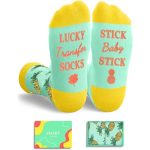Walking may seem like a simple activity, but the right gear can make all the difference—especially when it comes to socks. The wrong material can lead to blisters, sweaty feet, or even cold toes, turning a pleasant walk into an uncomfortable ordeal.
So, what material is best for walking socks? The answer depends on various factors, including climate, distance, and personal preference. Wool, cotton, synthetic blends, and bamboo all have unique benefits. Let’s explore each option in detail to help you find the perfect pair for your next adventure.
Why Sock Material Matters for Walkers
Many people underestimate the importance of socks, assuming any pair will do. However, the right material plays a crucial role in comfort, moisture management, and blister prevention.
Walking creates friction, and if your socks don’t wick away sweat, moisture buildup can lead to blisters. Additionally, temperature regulation is key—cold feet in winter or overheated soles in summer can ruin your experience.
Choosing the best sock material ensures breathability, cushioning, and durability. Whether you’re strolling through the city or trekking up a mountain, the right socks will keep your feet happy.
Wool: The All-Season Performer
Wool is a favorite among hikers and walkers, and for good reason. Unlike cotton, which absorbs moisture and stays wet, wool wicks sweat away from your skin while still keeping you warm. This makes it ideal for both cold mornings and long-distance walks where your feet might sweat.
Merino wool, in particular, is soft, lightweight, and naturally odor-resistant. It’s also breathable, preventing overheating in warmer weather. If you’re looking for a sock that performs well in various conditions, wool is a reliable choice.
Cotton: Comfortable but Limited
Cotton socks are soft, affordable, and widely available, making them a popular everyday option. They feel great against the skin, which is why many people reach for them during short, casual walks.
However, cotton has a major downside—it absorbs moisture and dries slowly. This can lead to damp socks, increasing the risk of blisters and discomfort on longer walks. For brief outings in mild weather, cotton works fine, but for serious walking or hiking, you’ll want something more moisture-wicking.
Synthetic Blends: Durability and Moisture Control
Synthetic materials like polyester, nylon, and spandex are commonly blended to create high-performance walking socks. These fabrics excel at wicking moisture away from the skin, keeping your feet dry even during intense activity.
Another advantage of synthetics is their durability. They resist wear and tear better than natural fibers, making them a great choice for frequent walkers or hikers. Many synthetic socks also include extra cushioning in high-impact areas, providing additional comfort.
The only downside? Some synthetic blends can trap odors more than natural fibers. If you’re prone to sweaty feet, look for options with antimicrobial treatments.
Bamboo: Soft, Eco-Friendly, and Breathable
Bamboo fiber is gaining popularity as a sustainable alternative to traditional sock materials. It’s incredibly soft—often compared to cashmere—and naturally antibacterial, which helps reduce odors.
Bamboo also regulates temperature well, keeping feet cool in summer and warm in winter. Plus, it’s highly absorbent, pulling moisture away from the skin. If you have sensitive skin or prefer eco-friendly products, bamboo socks are an excellent choice.
The only drawback is that bamboo fibers can wear out faster than wool or synthetics, so they may not be the best for rugged, long-distance use.
Blended Materials: The Best of Both Worlds
Many high-quality walking socks combine different fibers to maximize benefits. Wool-synthetic blends, for example, offer the moisture-wicking and cushioning of synthetics with the temperature regulation of wool.
Cotton-polyester blends are another common option, providing the softness of cotton with improved moisture control. If you can’t decide between materials, a blended sock might be the perfect compromise.
Choosing the Right Sock for Your Walk
Now that you know the pros and cons of each material, how do you pick the best one? Consider these factors:
- Climate: Wool or wool blends are ideal for cold weather, while bamboo and synthetics work well in heat.
- Distance: For long hikes, prioritize moisture-wicking materials like wool or synthetics.
- Comfort: If you prefer softness, bamboo or cotton blends may suit you best.
- Durability: Frequent walkers should opt for synthetic or wool blends for longevity.
Final Thoughts
The best walking sock material depends on your needs, but wool and synthetic blends tend to offer the best all-around performance. Cotton is great for short, easy walks, while bamboo provides a soft, eco-friendly option.
Investing in the right socks can transform your walking experience—keeping your feet dry, comfortable, and blister-free. Next time you lace up your shoes, make sure your socks are up to the task!
After all, happy feet make for happy walks.
Hello, I’m Kristin, the founder and main author of footwearsfact.com. I’ve been working as a footwear designer and have built a keen interest in different footwear problems, suggestions, and designing. I hope I’ll be able to serve your needs with my skillful team member.











